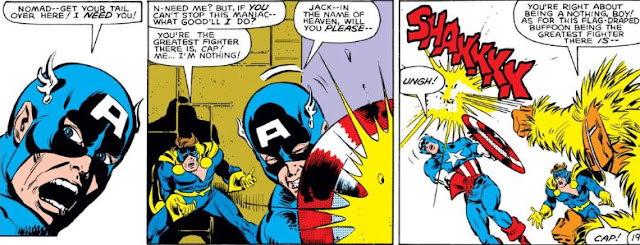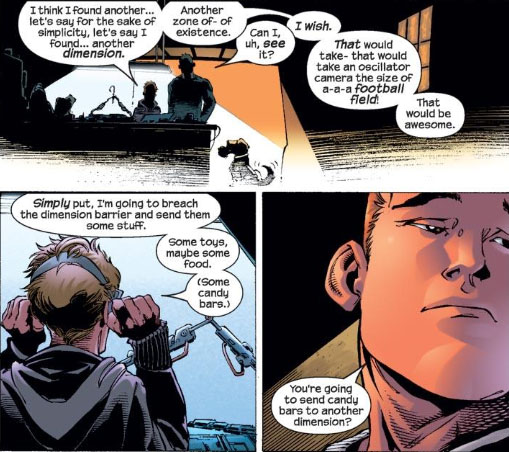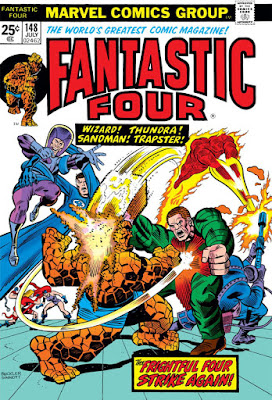Alex Gentry, the infamous Porcupine, hasn't had an easy time of it here at the PPC--mostly because try as he might, he can't seem to establish his cred as a formidable foe, even though he's one of Marvel's classic super-villains. In one instance, he was even dropped while trying to rob patrons at a fashion show--and if his custom-made weapons suit strikes out in a venue full of models, the word around town in criminal circles isn't likely to be charitable to him.
Gentry, however, is convinced his costume is a state-of-the-art suit that makes him unbeatable, even given the evidence to the contrary--and so he persists. And while he started out wanting to make a reputation for himself, what he's really after now is to make enough money selling his battle suit design to call it quits and live a lush life in early retirement; and so he decides to streamline his costume a bit, readapting his deadly quills into razor-tipped weapons and concussion bombs, while also including a high-voltage pack in his arsenal. The next step is to engage a high-profile super-hero, to prove the effectiveness of his suit as well as to settle a few scores; and to that end, he's sought out another classic Marvel organization to make a deal with, a group that has its own history with the Porcupine's designated target.
This time, Gentry is leaving nothing to chance, deploying a series of spy cameras to track the movements of Captain America in order to ambush him when the time is right. But Cap's new informal partner, the Nomad (a/k/a Bucky, the former partner of the Captain America of the 1950s), has been doing his own tailing of Cap, and has spotted the Porcupine's spy cam.
Apparently the Porcupine isn't as original as he claims to be with his inventions--though in this case, it's artist Sal Buscema who's reached back 17 years to borrow a little technology we've seen before, in an issue of Fantastic Four:
(Man, it must have been so easy to write Sue's dialog in those days!)
Taking the initiative, the Nomad trails the device back to its source--but the Porcupine proves to be his match and captures him, later using him to catch Cap off-guard. And while Cap easily dealt with the Porcupine in a prior encounter, it looks like the Porcupine's new suit may just turn the tables on his star-spangled foe this time.
Nomad, as you might have realized, has been having difficulty with his self-confidence, trying to measure up to Cap's standards but finding himself out of sorts in his attempt to turn his life around (since being cured of the mind damage that afflicted both himself and the 1950s Cap) and establish himself as a hero in the 1980s. His capture by the Porcupine has likely given him further cause to doubt himself; but seeing Cap on the ropes has spurred him into action, and he's able to fall back on the drive and determination that likely had him seeking out a life of adventure in the first place. Though he doesn't yet realize that his behavior is precisely what his mentor was hoping for.
It looks like things have turned around for the Nomad--though not so much for the Porcupine, whose new suit seems to be on its way to establishing the history of its predecessor.
NEXT:
Because you (maybe) demanded it! The Porcupine's last stand!




















































